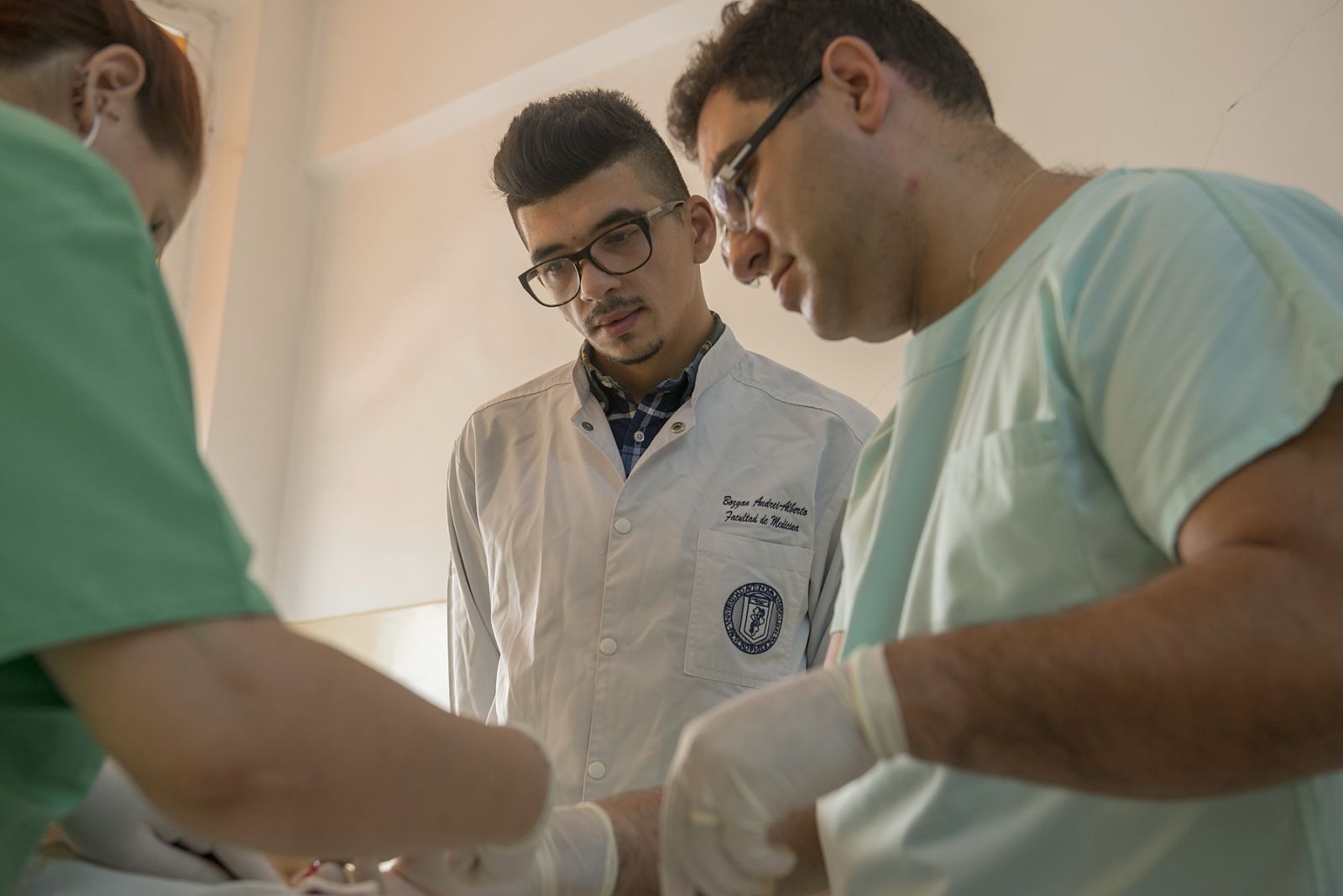- European Network for non-violence and dialogue

Let Us Offer Each Other the Sign of Peace
12.04.2018 09:19
The Initiative: I Am a Roma Doctor
12.04.2018 09:15Pécs Step by Step School and the Hódmezovásárhely Model
One of the key factors due to which the integration activities of the school have succeeded is the fact that they use the SBS teaching method.
The city of Pécs is the fifth largest city in Hungary with 145,666 inhabitants, of which approximately 10 per cent consists in Roma population. The main characteristics of the socio-demographic situation of the Roma in Pécs is deprivation as they are still gravely affected by the loss of industrial employment since the 1980s. The spatial dispersion of Roma in the city is uneven and they live mostly in segregated areas, which makes integration with the majority population difficult.
The Budai Városkapu Iskola is an integrated institution located close to different Roma segregated areas. The school has 450 students, the Roma population of the school is about 40 per cent. About 50 per cent of the total school population come from disadvantaged families. The school’s location was traditionally the mining area of the city before the political changes in 1989.
The school has used the child-centred Step by Step (SBS) teaching methodology since 1997. The method was developed by the Open Society Foundation and builds on cultural diversity, equal opportunity, participation, cooperation, respect, personal and joint responsibility, having in focus the integrated child-centred educational approach. In 2014, the school became a Step by Step Regional Methodological Centre. At the beginning of the SBS programme in Hungary back in 1994 there were about 300 institutions and approximately 1,000 teachers involved. Today the estimated number of SBS users is 45–50 institutions and about 200 teachers. The school could easily have become a segregated institution, but as a result of their activities, there are both Roma and non-Roma students in integrated classes.
One of the key factors due to which the integration activities of the school have succeeded is the fact that they use the SBS teaching method. This is a child-centred approach to teaching that emphasises the importance of family involvement in elementary school learning. The school organises various activities and programmes for parents which are joint for both Roma and non-Roma. There is no tension between Roma and non-Roma parents and conflicts between the two groups are not common. Therefore, the integration takes place on multiple levels of society, both among children and the older generation.
Thanks to the school having a good professional reputation among the parents, it has a good name in the community as such. The institution organises open-door days so that anyone interested in its teaching method, facilities or any other aspect can visit and witness it firsthand. Another factor that contributes to the success of the integration endeavours is the fact that the school has good relationships with kindergartens in the area, it has sister classes in the kindergarten and it organises activities there as well. The transition from kindergarten to school is then quite smooth for students, which helps them to adapt quickly. Lastly, the school building is attractive, newly renovated and very well equipped with advanced sport facilities that enable the organisation of attractive extra-curricular activities. Despite all of these activities, Mrs Jákiné Szabó Rita, the head of the Step by Step Methodological Centre, says that there is a growing number of Roma students in the school. She further adds that if the process of segregation speeds up, they will not have enough tools to stop the process.
Another school that attempts to integrate the majority population and the Roma minority is in Hódmezővásárhely, which is a medium-sized city in Hungary with about 48,000 inhabitants. In the year 2006, the city realised that that in 10 years’ time the elementary school enrolment had dropped from 1,000 to 400 and that this would cause major problems in the educational system. In 2007, the city management started a project to redesign the whole elementary school system of Hódmezővásárhely focusing on good quality, effective, integrated education that also served the needs of the labour market.
The city management closed down all 11 existing elementary schools and funded 7 new institutions, two of which were not managed by the city. The institutions are supported with a school bus system run by the city. They have worked out a district system focusing on the equal distribution of children with multiple disadvantages in different elementary schools. During the process, the city cooperated with the Roma Minority Self-Government, the citizens, the parents, teachers, human rights organisations and the local and national media. The whole project resulted in an integrated elementary educational system, in institutions being more effective, and in the students having better results. The general opinion of experts is that this unique example is an extremely successful model for integrated education. The model could be spread and used in other cities as well where there is strong enough political willingness on the side of the city management. http://www.budaivaroskapu.hu/ https://www.hodmezovasarhely.hu/welcome-to-the-website-of-hodmezovasarhely
Related posts
}
}
}




